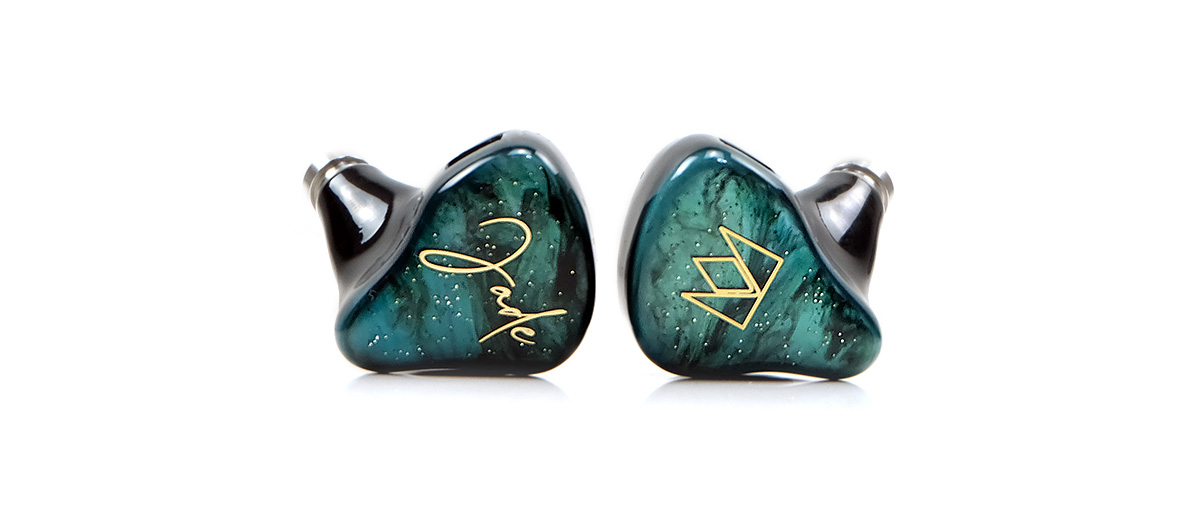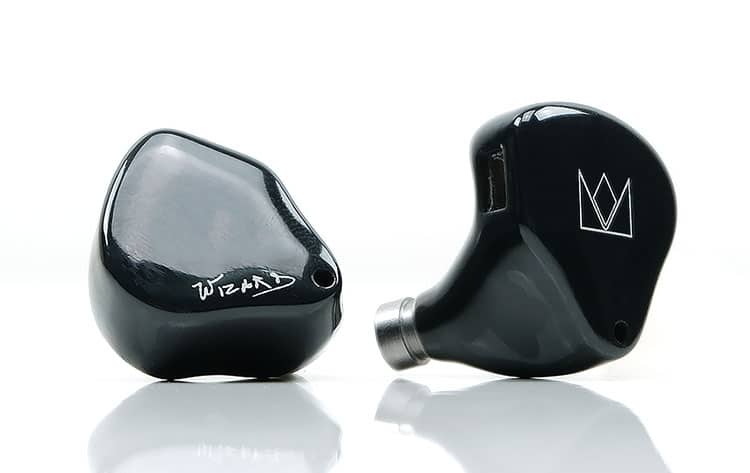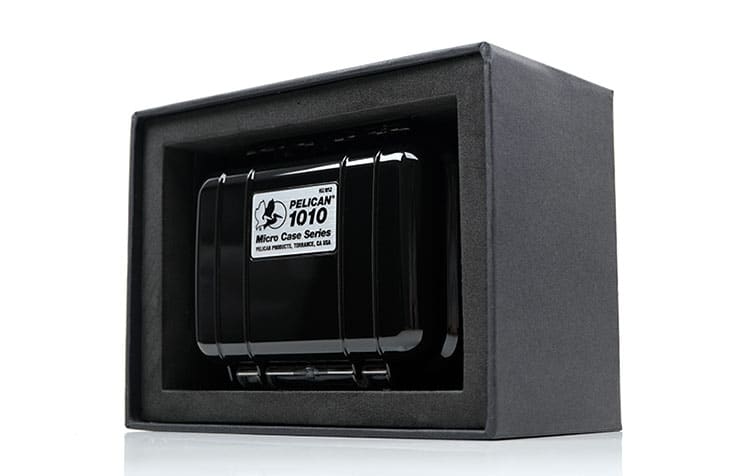Select Comparisons
All comparisons were completed using the HiBy RS8 and the Cayin N6ii with the R01 motherboard as sources with the stock single flange red stem silicone tip.
Noble Audio TUX 5
$1199
The Noble Audio TUX 5 was the original or first hybrid 5-driver from Noble Audio. It was launched in 2019 and you can find our full review of the TUX 5 here.
Technical
On the face of it, not much has changed from the TUX 5 in 2019 to the Jade of today. Both are 5-driver hybrids with both using 10mm dynamic drivers for the lows and 4 BA for the mids and the highs.
The devil is more in the detail with this one since Noble has only given a hint that the selected drivers for the TUX 5 are not the same as the ones being used inside the Jade.
Time and thus technology has moved on though one would presume that the BA drivers have been updated. We do know that the Jade driver is using a composite material diaphragm for the dynamic driver and Sonion BA for the rest of the range.
The efficiency levels are also unlisted for the TUX 5 though we have a <35Ω rating for the Jade and a declaration that it is sensitive enough to be used with most portable sources.
Our real-world testing with both the HiBy RS8 and the Lotoo PAW Gold Touch using a low gain balanced output would seem to suggest both have the power demands and sensitivity levels.
Design
Noble has learned from the plainer all-black TUX 5 finish with Jade’s mix of green and black aesthetic offering a more complex and interesting visual.
However, more than that there is a degree of maturity in the shell design with a more aggressive and refined contouring on the main body and a cleaner mesh grill wax guard on the stainless steel nozzle cap.
The Jade form factor is bigger than the TUX 5, with increased height or depth though technically the nozzle length seems to be about the same. Any venting on the Jade for the dynamic drive is much more discreet this time around compared to the obvious funnel on the front plate of the TUX 5.
The fitting and comfort levels of both are almost the exact same. The only noticeable difference was the slightly superior level of passive isolation from the Jade and its enhanced size sticking a little bit further out of your ear.
Do note, the tip selection from the TUX 5 is the older grey and black foam lineup and not the newer multiple silicone and dual flange choices. Personally, I prefer the new tip lineup as it is more flexible with the silicone red stem tips offering the best seal and comfort.
Both the Jade and the TUX 5 with the same stock cable, a 1.2m 8-core OCC wire with the main difference in the jacket finishing. The TUX 5 version is a black and white design to fit in with the name whereas the Jade is a plain black finish only. Both handle and perform in the exact same manner.
Performance
The TUX 5 has more of a U or slight V-shaped response curve. It’s stronger on the lows and highs though the clarity through the mids is very good. The Jade is a bit more balanced and veering more towards a W-shaped tuning with a stronger level of pinna gain.
The Jade sub-bass up to around 50-80Hz is more in line with its mid-bass presence but reduced relative to the stronger 20-50Hz tuning of the TUX 5. You get slightly less outright power compared to the TUX 5 but in return, you get a punchier mid-bass and a richer timbre through the mids.
The TUX 5 mids are clear but offer more contrast from a more dominant fundamental and a treble overtone whereas the Jade mids have a warmer timbre, with a bit more body, and a slightly softer leading edge on the notes. Between the two, the Jade is less likely to emphasize any natural sibilance from high-pitching vocalists.
Thus the Jade is the more natural midrange performer for me, especially with that pinna gain lifting it noticeably further forward compared to the TUX 5. It’s excellent for vocals but also very flexible for classic rock and indie.
The TUX 5 excels in the highs and lows with additional sparkle and sub-bass rumble making it quite suitable for some metal genres as well as EDM mixes, especially some trance works. It casts a deeper and higher staging quality but with vocals pushed further back, it might not connect as well for acoustic and vocal-centric genres.
Noble Audio Kadence
$1599
The Noble Audio Kadence was launched at the same time as the Jade and is price-wise positioned a step higher also. Our recently published review of the Kadence can be found here.
Technical
The Kadence is quite a different proposition to the Jade. This is an all-BA 8 driver implementation and Noble Audio’s first in almost a decade.
The Jade has a legacy also in some say given it was conceived as far back as 2018 but like the Kadence it is constructed with the latest drivers on the market.
The key difference is the single 10mm dynamic driver inside the Jade. That will bring a mix of driver timbres that may appeal to different audiences.
We do know that the Kadence uses six Sonion balanced armature drivers and 2 Knowles whereas the Jade is using all Sonion for its BA implementation. The Kadence crossover will likely be 4-way as opposed to a 3-way inside the Jade.
For the rating, Noble keeps their cards close to their chest for both IEMs but I can tell you the Kadence is more efficient from our side-by-side testing using the N8ii as a source in low gain balanced output with the P+ mode on. Nevertheless, neither monitor is terribly hard to drive from most decent DAPs.
Design
In many ways, the design language of the Jade mirrors that of the Kadence. Both are resin-type shells with individual and unique aesthetics for the faceplates. Both have heavily contoured bodies for a comfortable fit and both are very lightweight in the hands and ears.
Even the use of the new stainless steel nozzle cap and mesh guard are matching as well as the stock 1.2m 8-core OCC black jacket finish on the cable.
The key difference is in the plate finishing with the Jade offering what I think is a bit more pop with the green and black swirl. The Kadence shell is subtler with the mesh of cloudy greys so it might suit those who want a lower profile look in their IEM.
One thing you might find surprising is the passive isolation of both. They are the exact same which is a big bonus for the Jade considering it’s a hybrid.
Those dynamic drivers need to breathe so usually there is a dip in isolation with venting but not the Jade. With matching tips, they isolate as well as each other and feel just as comfortable in the ear also.
Performance
The Kadence has that BA coherence with a light, quick-paced tone, plenty of treble sparkle, and a reasonably punchy mid-bass but lacks the weight and density of the Jade low-end dynamic driver.
Whereas the Jade is fuller-sounding, smoother, and heavier on the lows but in turn does not have the same airy extension as the Kadence nor quite the same level of resolution and complex layering.
The curves are quite different with the Kadence offering more of a gentle u-shape with its rise in the mids starting more around 2k and peaking around 7-8k.
There is a slight shift to a thinner note with a stronger odd-harmonic presence in the timbre giving the tone a more neutral quality. Despite that, the treble tone is quite refined and not at all harsh or metallic in nature. Notes are clean, and more on the pure side but compared to the Jade they are also a little lighter from the weaker fundamentals from the low end.
The Jade does sound comparatively darker next to the Kadence. Your focus will be on the stronger bass and vocal performance. Pinna gain is higher on the Jade so it casts a more intimate staging quality with vocals to the fore, more so than the Kadence. Layering drops a notch as does air but the vocal weight and richness make this a smoother listening experience.
I would take the Kadence for more reference-level listening where micro-detail is more important. The Jade is more for a relaxed listening experience where you want a weightier tone and stronger mids presence but without fatigue.
Noble Audio Zephyr
$1450 ($2300 Prestige version)
The Noble Audio Zephyr was released in mid-2020 and at the time described by Noble as one of their finest trip drivers to date. You can read our full review of the Zephyr here.
Technical
Like the Jade, the Zephyr is also a hybrid dynamic and BA driver combination. However, the driver count is lower, perhaps for some surprisingly lower given the price difference. I can only presume the quality of the Zephyr drivers involved might be higher or more costly to acquire.
The Zephyr is a triple driver consisting of a single 10mm dynamic described by Noble as a “top shelf” driver so it is possible it’s a higher-end model than the equivalent 10mm dynamic driver inside the Jade.
The rest of the configuration is a dual proprietary BA driver setup using Knowles branded drivers as opposed to a quad Sonion inside the Jade.
The precise configuration of the Zephyr is not declared but given it uses a 3-way system, (triple-bore), we can assume the dynamic driver for the low-end, and a BA each for the mids and the highs.
The Jade is more complex with its quad BA but ‘sans data’ we are presuming 3-way also with 2 for the mids and 2 for the highs and the dynamic driver for the lows.
In terms of efficiency and tested with an RS8, the Zephyr does need a little more current to achieve the same listening volume as the Jade suggesting either its impedance is slightly higher or the overall SPL is lower, or both. The gap is not huge for me, maybe about 5-6 steps upwards for the Zephyr from the Jade on the RS8 volume in low gain.
Design
I just want to be clear that the picture above is the Zephyr Prestige edition and not the regular version which retails closer to the Jade price. It is a stunning design nevertheless but one of many beautiful designs the Prestige line offers.
This one is a maple burl with a resin finish and gives off a beautiful warm vibe with a mix of grained tan and wine tones. It is very unique.
Now, the stock or universal version of the Zephyr is more of an in-between of the TUX 5 and the Jade in terms of design with a black shell and a honeycomb front plate design. However, where it differs from Jade is the use of aluminum with a mixed aluminum/resin matrix faceplate material. It should provide a more robust shell but add a little additional weight.
The Prestige version I have here weighs almost the same as the Jade universal version with relatively similar dimensions also. It is perhaps a little less contoured than the Jade which is something I presume is born out of the wood-cutting process whereas the Jade resin shells are 3D printed.
The comfort levels of both are excellent but what surprised me was the isolation levels. I was expecting the Jade to be a little bit superior as the venting hole is almost non-existent compared to the sizeable hole on the Zephyr. With matching silicone tips, the Zephyr did better on lower frequency hum and background noise than the Jade.
As for cables, both come with the exact same stock 1.2m 8-core OCC black jacket finish so there are evenly matched for performance, handling, and a nice and low level of microphonics.
Performance
The Zephyr is like the Tux 5, with a mildly v-shaped response curve though the quality of the low-end timbre is better for my money and not quite as extreme on the sub-bass prominence.
The Jade does hit a lot heavier for me though it’s not so much the extension that seems similar but rather the gain and amount of warmth that gives it that meatier low-end.
The Zephyr does attenuate a bit more for me down through the mid-bass to around 1k in the mids so a lot of the instrumental presence gets pushed back a bit along with some lower-pitching vocal performances.
In turn, the Jade seems less attenuated across the same region, which, combined with a natural bump in the mids gives it a closer staging quality amplifying those richer tones.
The Zephyr is more extended on the highs, with more sparkle and headroom which does produce a very precise and pure tone through the mids.
The mids do have a 1-4k lift so it is not as if they lack any sort of presence but rather the contrast is much higher generating an excellent fundamental and a clean overtone but not as much texture or thickness. That’s to the advantage of the Jade which has a more natural midrange timbre.
Soundstage-wise, the Jade will draw you more to the mids and lows, especially to vocal performances. It is quite balanced though slightly darker in the highs compared to the Zephyr.
The Zephyr is comparatively taller, and the extension on the lows is about equal but with less weight or gain it does not quite have the same fulsome tone. The mids are not as pushed forward around 1-3k but percussion presence in the upper mids is higher with more bite and energy.
Our Verdict
The Noble Audio Jade, like the previous TUX 5, is tuned for an enjoyable listening experience.
It is not a reference-style monitor but neither is it all bass and treble in its presentation. This is a balanced but lively performance, great for rock and pop and for anyone looking for a stronger vocal focus.
Once again, the new or updated design language with heavily contoured resin models makes this a comfortable wearing experience but tips will play a role. My suggestion is to go for the red stem silicone tips over the more relaxed-sounding foams.
There are a lot of 5-driver models out there these days so the competition is tough. The Jade may not be the most detailed of models out there but it’s got a very lively tonal balance to its tuning to make it a very flexible pairing for most modern rock and vocal lovers.
Noble Audio Jade Specifications
- Composite body with unique acetate faceplate
- Stainless steel nozzle with an integrated wax guard
- 5 driver arrangement
- 1 10mm dynamic drivers
- 4 balanced armature drivers
- Impedance less than 35 ohms
- Hand-assembled and matched
- Sensitive enough for use with most smartphones as well as portable amps and daps
- Detachable cable with industry-standard 2-pin configuration (0.78 mm diameter)





